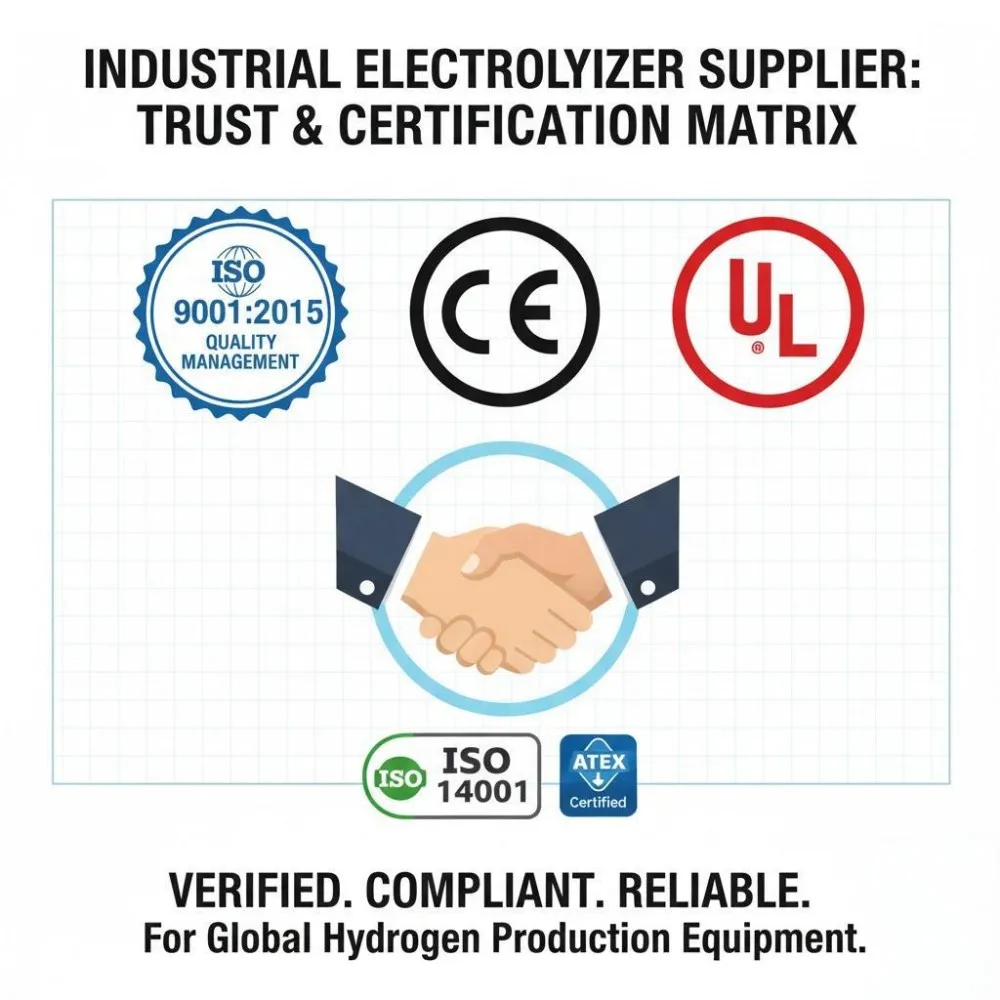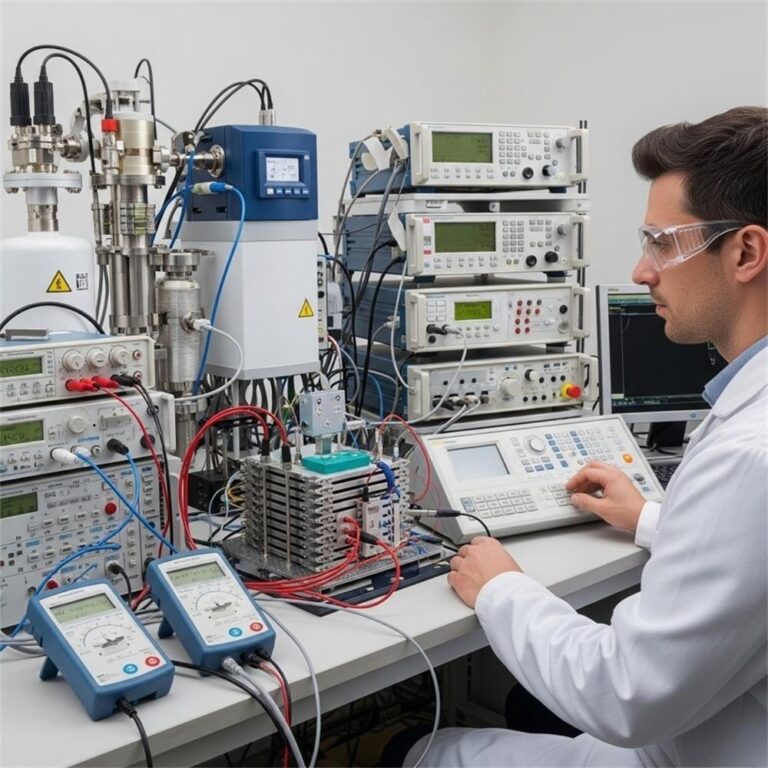Unleash the Power of Hydrogen: High-Flow Generators Transforming Industries
Introduction
Imagine an energy source that’s not only clean and abundant but also powerful enough to drive some of the world’s largest industries—hydrogen fits that bill perfectly. In fact, according to the International Energy Agency (IEA), global demand for hydrogen has more than tripled since 1975 and continues to rise steadily.
Industries ranging from oil refining to semiconductor manufacturing are increasingly relying on hydrogen’s unique properties. Yet, meeting industrial demands requires high-flow hydrogen generators that can deliver both volume and purity. In this article, we’ll dive deep into high-flow hydrogen generators, focusing on their power requirements, key specifications, and how they’re revolutionizing major sectors.
Let’s explore how unleashing the power of hydrogen is transforming industries today—and lighting the way for a sustainable tomorrow.

Industrial Uses Requiring High Hydrogen Flow
Refining and Petrochemicals
Hydrogen plays a crucial role in refining processes such as hydrocracking and hydrodesulfurization. Hydrocracking uses hydrogen to break down complex hydrocarbons into lighter, more valuable products like gasoline and diesel. Meanwhile, hydrodesulfurization removes sulfur compounds from fuels to meet environmental regulations.
These processes require continuous, high-flow hydrogen streams—often exceeding 500 Nm³/hr for large facilities. For example, a single hydrocracking unit in a major refinery might consume thousands of cubic meters of hydrogen daily, highlighting the importance of robust and reliable hydrogen supply systems.
Chemical Synthesis
Hydrogen’s role in chemical manufacturing cannot be overstated. It’s essential in producing ammonia via the Haber-Bosch process and methanol, which is a building block for numerous other chemicals.
For context, a world-scale ammonia plant may consume up to 250,000 Nm³/day of hydrogen! These staggering numbers illustrate the critical need for high-flow hydrogen generators capable of delivering vast quantities with consistent quality.
Key Reactions:
- Ammonia synthesis: N₂ + 3H₂ → 2NH₃
- Methanol synthesis: CO + 2H₂ → CH₃OH
Metal Processing
In metal treatment processes like annealing and reduction, hydrogen acts as a shielding gas to prevent oxidation. Maintaining specific atmospheric conditions requires a steady hydrogen flow, typically around 100–300 Nm³/hr for mid-sized operations.
High purity (up to 99.999%) is essential here. Any impurities can lead to defects, compromising product quality. Thus, precise flow control and gas purity management are pivotal.
Electronics Manufacturing
Semiconductor fabrication and flat-panel display production demand ultra-high purity hydrogen (UHP) with flow rates often tailored to individual equipment needs.
Even trace amounts of contaminants can ruin entire production batches, making hydrogen supply systems in electronics industries some of the most stringent—and technologically advanced—in the world. Safety measures, including explosion-proof facilities and continuous leak monitoring, are also mandatory.
High-Flow Hydrogen Generator Specifications
Technology Overview
There are three main hydrogen generation technologies suited for high-flow industrial applications:
- PEM Electrolysis: Uses a solid polymer membrane; highly efficient and responsive but expensive.
- Alkaline Electrolysis: Uses a liquid electrolyte; more cost-effective for large-scale production.
- Steam Methane Reforming (SMR): Produces hydrogen by reacting methane with steam; dominant for bulk hydrogen but has a carbon footprint.
Each has its pros and cons depending on flow requirements, purity needs, and budget constraints.
Flow Rate and Purity
High-flow hydrogen generators typically produce:
- Flow Rates: >100 Nm³/hr
- Purity Levels: Up to 99.9999% depending on technology and application
Maintaining both high flow and high purity simultaneously is critical, especially in chemical and electronics sectors.
System Components
Typical high-flow generator setups include:
- Electrolyzer Stack: Core unit where hydrogen is generated.
- Power Supply: Provides regulated current and voltage.
- Gas Purification Units: Remove oxygen, moisture, and other contaminants.
- Control Systems: Monitor and regulate operational parameters.
(Schematic Diagram Available Upon Request)
Key Performance Indicators
Performance metrics to watch include:
- Hydrogen Production Rate: (Nm³/hr)
- Energy Efficiency: (% of electrical energy converted to hydrogen)
- System Uptime: (measured in hours/year)
Optimizing these ensures reliability and cost-efficiency.
Power Consumption Analysis
Energy Requirements
Producing large amounts of hydrogen at high flow rates demands substantial energy input. The energy consumption can vary depending on the technology and process:
- PEM Electrolysis typically requires around 50–55 kWh of electricity to produce 1 kg of hydrogen.
- Alkaline Electrolysis usually needs 48–52 kWh/kg.
- Steam Methane Reforming (SMR), while using less electricity, consumes significant amounts of natural gas and heat energy.
Breaking it down further:
- Electrolysis process: 70–80% of the total energy consumption
- Gas Compression: 10–15%
- Cooling Systems: 5–10%
Thus, for a facility producing 1000 Nm³/hr of hydrogen via electrolysis, the total power demand can easily exceed 5–6 MW depending on system efficiency.
Factors Affecting Power Consumption
Several variables influence the power consumption of high-flow hydrogen generators:
- Technology Type: PEM systems often consume slightly more power but offer quicker response times than alkaline systems.
- Operating Conditions: Higher operating temperatures and pressures generally improve efficiency but increase system complexity.
- Current Density: Higher current densities produce more hydrogen but can also decrease electrolyzer lifespan and efficiency.
Even minor deviations in system design, such as electrode material choice or membrane thickness, can have measurable impacts on power consumption.
Energy Efficiency Optimization
Enhancing energy efficiency is critical for reducing operational costs and environmental impact. Proven strategies include:
- Waste Heat Recovery: Capturing and utilizing the heat generated during electrolysis can dramatically improve overall system efficiency.
- Advanced Control Algorithms: Intelligent control systems optimize current and voltage settings dynamically based on demand and environmental conditions.
- Renewable Energy Integration: Tying electrolyzers directly to solar or wind farms can lower the carbon footprint and, in some cases, electricity costs.
Moreover, many countries offer government incentives and subsidies to encourage the adoption of energy-efficient hydrogen production technologies, further enhancing financial viability.
Cost Analysis
Electricity typically represents 60–70% of the total operating cost of hydrogen production by electrolysis. A breakdown looks like this:
| Cost Component | Percentage of Total Cost |
|---|---|
| Electricity | 60–70% |
| Maintenance | 10–15% |
| Water and Consumables | 5–10% |
| Labor | 5–10% |
To minimize costs:
- Use Off-Peak Power: Capitalize on lower night-time or weekend electricity rates.
- Long-Term Energy Contracts: Lock in lower electricity prices through fixed-rate contracts.
- Demand-Side Management: Adjust hydrogen production rates based on real-time electricity pricing.
Reducing electricity costs can significantly lower the Levelized Cost of Hydrogen (LCOH), making hydrogen a more competitive option for industrial users.
System Integration and Maintenance
Integration with Industrial Processes
Successfully integrating a high-flow hydrogen generator into an industrial facility requires thorough planning and infrastructure readiness:
- Piping Systems: Must handle high-pressure hydrogen safely and efficiently.
- Storage Solutions: Options include high-pressure cylinders, metal hydrides, or underground caverns depending on volume and pressure requirements.
- Safety Systems: Essential elements like flame arrestors, emergency shutdown valves, and hydrogen sensors must be included.
Case Study Example: A large petrochemical plant in Texas integrated an on-site PEM electrolysis unit producing 300 Nm³/hr of hydrogen, resulting in a 15% reduction in operational costs within the first year.
Safety Considerations
Hydrogen’s low ignition energy and wide flammability range demand strict safety measures:
- Leak Detection Systems: Must be installed throughout the generator and storage areas.
- Explosion-Proof Equipment: Motors, switches, and instrumentation must be certified for hydrogen service.
- Ventilation Systems: Proper airflow prevents gas accumulation.
Adhering to industry standards like NFPA 2 (Hydrogen Technologies Code) and ISO 19880-1 (Gaseous hydrogen — Fueling stations) ensures regulatory compliance and operational safety.
Maintenance Requirements
Routine maintenance is essential for reliable operation:
- Daily: System checks for leaks, pressures, and temperatures.
- Monthly: Replace filters, calibrate sensors, inspect electrolyzer stacks.
- Annually: Comprehensive system inspections, preventive part replacements, efficiency audits.
Following a strict maintenance schedule maximizes uptime and prolongs equipment life.
Troubleshooting and Support
Common operational issues may include:
- Low Hydrogen Output: Often due to membrane degradation or contamination.
- Increased Energy Consumption: Might indicate scaling on electrodes or system leaks.
- Sensor Failures: Routine recalibration and software updates minimize downtime.
Many manufacturers offer remote monitoring services and service agreements, ensuring expert support is just a call away.

Conclusion
High-flow hydrogen generators are pivotal in empowering industries to meet modern efficiency and sustainability goals. By understanding the power requirements, system specifications, and integration best practices, industries can harness hydrogen’s full potential with minimal operational risks and costs.
As technology evolves, we can expect hydrogen production to become even more efficient and cost-effective. With growing governmental support and increasing focus on carbon neutrality, hydrogen is poised to become the cornerstone of sustainable industrial transformation.
In the end, embracing hydrogen today is an investment in a cleaner, more efficient, and more resilient industrial future.
🔥 Frequently Asked Questions (FAQs)
1. What industries require high-flow hydrogen generators?
Industries like refining, petrochemicals, chemical synthesis, metal processing, and electronics manufacturing rely heavily on high-flow hydrogen generators for continuous operations.
2. How much power does a high-flow hydrogen generator consume?
Power consumption typically ranges from 48–55 kWh per kilogram of hydrogen produced, depending on the technology and system efficiency.
3. What purity levels can high-flow hydrogen generators achieve?
Most high-flow systems can achieve hydrogen purity levels greater than 99.999%, essential for industries like electronics and chemical manufacturing.
4. What are the main types of hydrogen generators?
The three primary types are PEM electrolysis, alkaline electrolysis, and steam methane reforming (SMR).
5. How can industries reduce the cost of hydrogen production?
By integrating renewable energy, using off-peak electricity, optimizing system design, and locking in long-term energy contracts, industries can significantly lower hydrogen production costs.
6. Are there safety concerns with using hydrogen generators?
Yes, due to hydrogen’s flammability and low ignition energy, strict safety protocols—including leak detection, proper ventilation, and explosion-proof equipment—are critical.
🔗 External Resource:
For a deeper dive into hydrogen technologies, check out Hydrogen Council – Hydrogen Insights Report.







